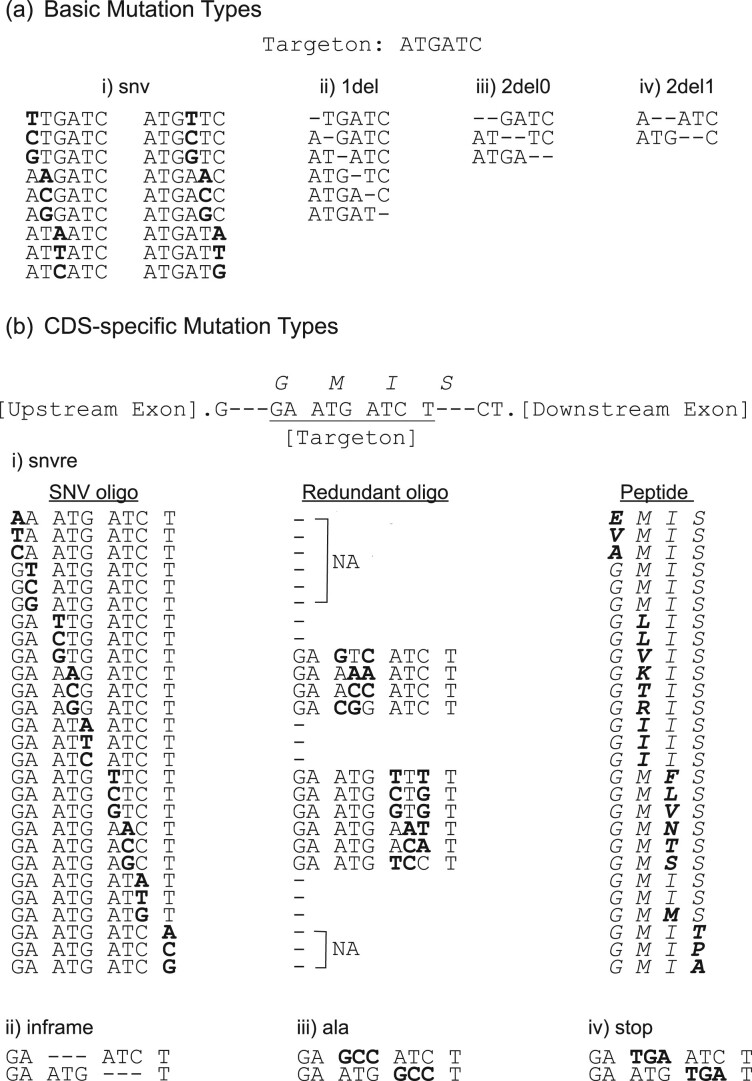Fig. 2.
Mutator function descriptions: (a) Basic mutation actions that do not require CDS reading frame information. An example six base-pair targeton is shown for explanation purposes; (a-i) ‘snv’ results in all possible nucleotide substitutions at each position in the targeton, (a-ii) ‘1del’ deletes single nucleotides at each position, (a-iii) ‘2del0’ deletes nucleotides in tandem starting at position 0, (a-iv) ‘2del1’ deletes nucleotides in tandem starting at position 1. (b) Mutation actions that require CDS reading frame information. An example nine base-pair targeton is shown in which the first and last codon are split between upstream and downstream hypothetical exons. Amino acids encoded by codons are displayed in capital italics above the DNA sequence; (b-i) the ‘snvre’ mutation function runs the ‘snv’ function resulting in ‘SNV oligo’ output. CDS frame information is computed and where a missense change occurs as a result of ‘snv’—shown in ‘Peptide’ in bold—a ‘Redundant oligo’ is generated. This redundant oligo encodes the same missense change as that generated by ‘snv’ at the peptide level, but with an alternative triplet sequence. The redundant triplet sequence chosen is the most frequent according to the codon frequency table (or next most frequent if ‘snv’ generates the most frequent). Instances in which redundant oligos are not generated are represented by ‘–’ in the redundant oligo column, this includes; when synonymous changes are created by ‘snv’ (these are included in ‘snvre’ outputs), when ‘snv’ alone creates an additional missense change that results in an appropriate redundant oligo (as is the case for peptides GLIS and GIIS in the example), when non-degenerate missense codons are produced (ATG in the example) and when partial codons are targeted (denoted by ‘NA’; codons cannot be replaced, but SNVs are still introduced); (b-ii) ‘inframe’ results in codon, triplet deletions for the longest inframe coding sequence within the targeton; (b-iii) ‘ala’ results in inframe substitutions to alanine based on the top-ranking alanine from the codon usage table, resulting in an alanine scan through coding sequence; (b-iv) ‘stop’ results in inframe substitutions to a stop codon based on the top-ranking stop from the codon frequency table, giving systematic truncating mutations throughout the coding sequence

